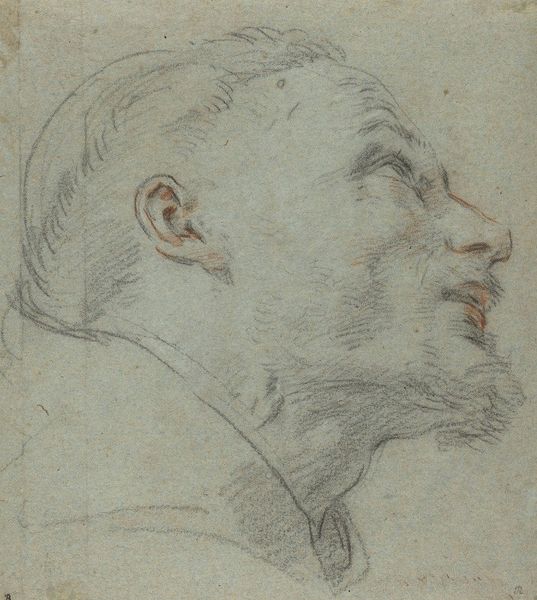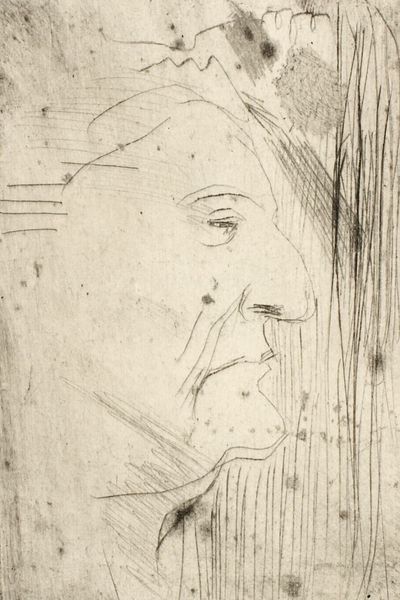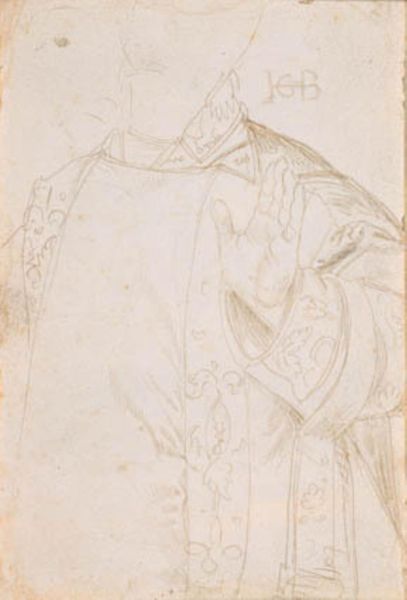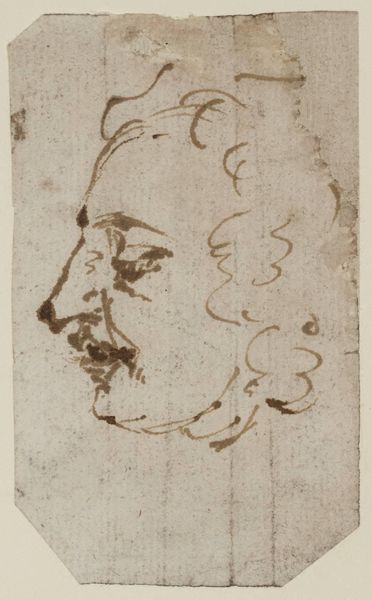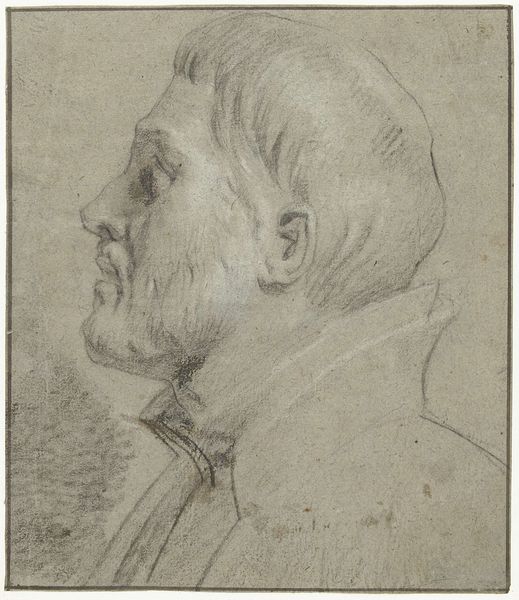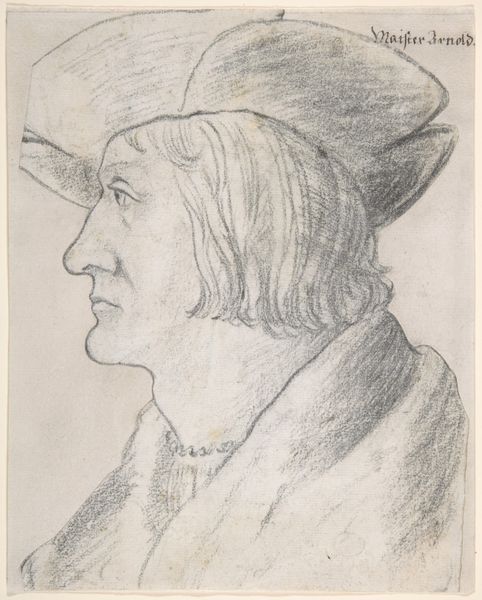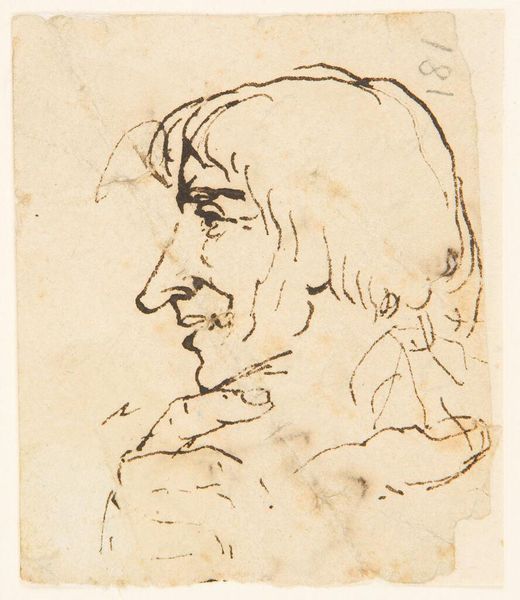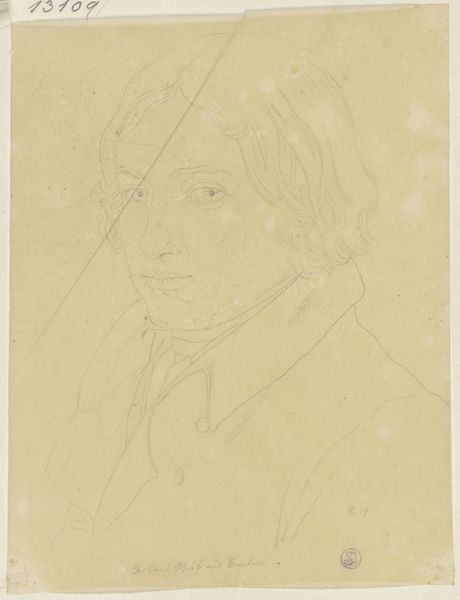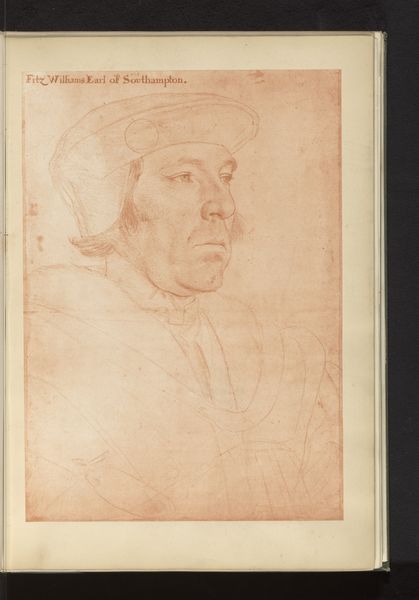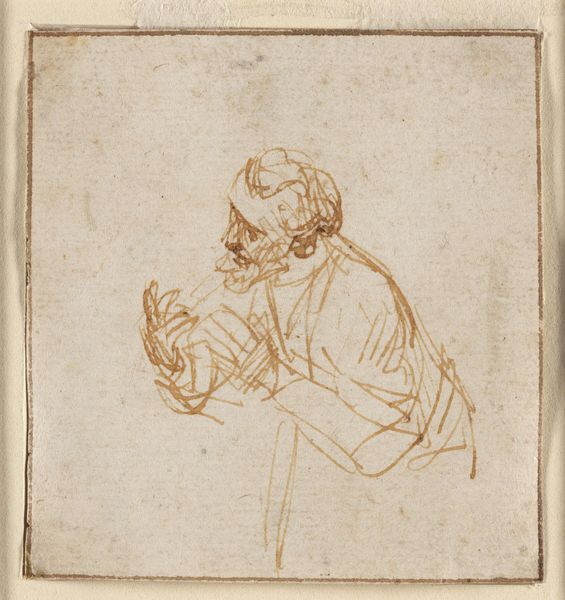
drawing
#
drawing
#
toned paper
#
pencil sketch
#
charcoal drawing
#
possibly oil pastel
#
oil painting
#
pencil drawing
#
coffee painting
#
underpainting
#
portrait drawing
#
watercolor
Dimensions: 149 mm (height) x 98 mm (width) (bladmaal)
Editor: Here we have Hans Baldung’s "Portrait of a Young Man," dating from 1484 to 1545. It's a drawing on toned paper, seemingly a preliminary sketch. I find the linear quality of the drawing striking; the subject's gaze is intense, and yet it feels unfinished, raw. How would you interpret this piece, particularly considering its materiality? Curator: This drawing invites us to consider the means of artistic production at the time. Look at the toned paper; it wasn't just a neutral ground but a prepared surface, a commodity acquired for a specific purpose. What kind of labor went into preparing such materials, and who had access to them? These questions position artmaking within a larger economic and social framework. Notice also the presence of the grid; a tool for transferring a design from one scale to another. Its presence reveals the underlying production process and planning that shaped the final artwork. How might this change your perception of the portrait's "unfinished" quality? Editor: So, rather than seeing it as incomplete, we can understand it as revealing the usually hidden mechanics of art-making. Is the medium, in this case the drawing on paper, influencing what he could achieve? Curator: Exactly. The choice of drawing – possibly charcoal, judging by the tag’s descriptions – signals a different artistic intention compared to, say, an oil painting. It speaks to efficiency, perhaps a study for a larger work or a demonstration of skill for potential patrons. Think about the societal implications; a readily available and relatively inexpensive medium democratizes artistic exploration, even while access to high-quality paper still remained a privilege. Editor: That gives me a new perspective. I was initially drawn to the face itself, but now I’m considering the conditions that enabled its creation. Curator: Indeed. By focusing on materials and process, we move beyond traditional art historical interpretations that prioritize individual genius or aesthetic beauty. We are examining the art-making as situated practice, reflecting material access, economic forces and social conditions. Editor: I see the drawing and paper now not as a simple image, but the culmination of available materials and historical context. Thanks for shifting my focus.
Comments
No comments
Be the first to comment and join the conversation on the ultimate creative platform.
